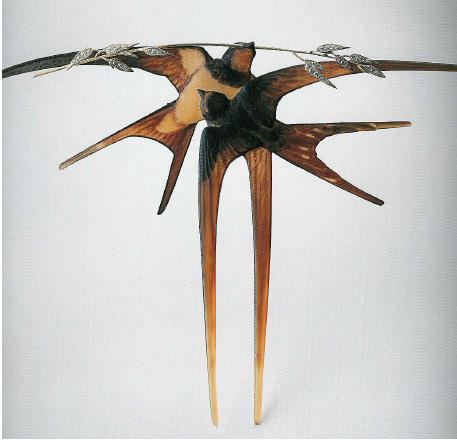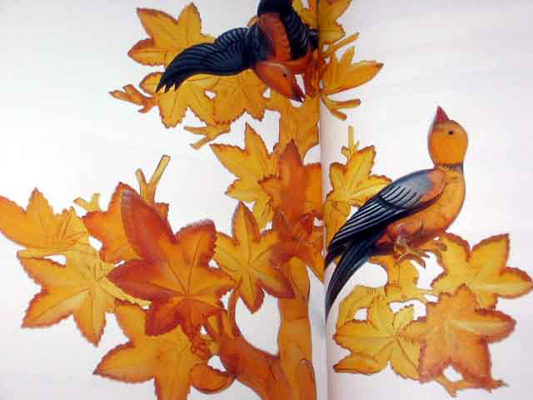After the opening up of trade routes to Japan, Edo and Meiji combs were introduced at the Paris exhibition of 1867. They took the European art world by storm and began a craze in France called Japonisme . It is interesting to compare Lalique’s masterpiece Two Swallows with a Stalk of Oats c. 1906-1908, carved horn gold and diamonds, with a Meiji kanzashi of plover birds.
In Swallows, Lalique incorporates the art nouveau philosophy of Symbolism: one thing transforms into another. He elongates the swallows’ wings to engineer the tines of the comb. It’s a double entendre.
The Meiji ornament, which went on a kanzashi stick, shows the relationship of a mated couple of plover birds in a tree. The shell used had different colors, which adds shadow, but the perspective and theme are realistic, emotional, and stunningly carved. The French skewed nature to match the intellectual ideas all art forms were using in that time. 

